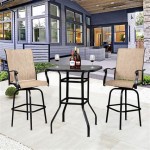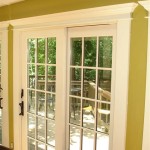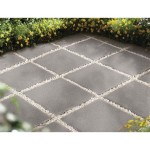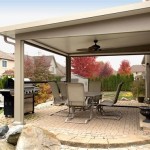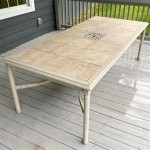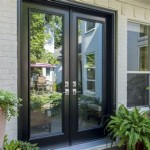Creative Patio Shape Ideas for Your Home-Made Kitchen
Creating an outdoor kitchen is a popular home improvement project, extending living spaces and offering an appealing venue for entertaining. A crucial aspect of any outdoor kitchen design is the patio itself. The shape of the patio significantly impacts the functionality, aesthetics, and overall flow of the outdoor space. This article explores several creative patio shape ideas suitable for accommodating a home-made kitchen, considering factors like available space, landscape architecture, and desired functionalities.
Defining Patio Functionality and Space Requirements
Before considering specific shapes, it's essential to define the intended functionality of the outdoor kitchen and patio area. This includes identifying the necessary appliances, such as grills, smokers, refrigerators, and sinks. Furthermore, the desired seating capacity and the need for dining and lounging zones should be determined. Once these requirements are established, the necessary square footage can be estimated, providing a starting point for selecting an appropriate patio shape.
An outdoor kitchen typically requires more space than a simple patio with just seating. Cooking zones need adequate clearance for movement and safety. Dining areas require enough space for tables, chairs, and comfortable passage. Incorporating these elements into the initial planning phase ensures that the chosen patio shape effectively accommodates all intended activities.
Consider access to the indoor kitchen. A patio that is easily accessible from the main kitchen area facilitates efficient food preparation and service. The proximity to indoor utilities, such as water and gas lines, can also influence the placement and shape of the patio.
Popular Patio Shape Options and Their Advantages
Several patio shapes lend themselves well to outdoor kitchen designs. Each shape offers unique advantages and disadvantages based on the specific site conditions and aesthetic preferences.
Rectangular Patio: A rectangular patio is a common and versatile choice. It facilitates efficient use of space and easily integrates with existing architectural lines. Rectangular patios are particularly well-suited for smaller backyards or areas where a defined, structured look is desired. The straight lines allow for easy furniture placement and create a sense of order.
Square Patio: Similar to rectangular patios, square patios offer a clean and symmetrical appearance. They are ideal for smaller, more intimate outdoor spaces. A square patio can effectively anchor an outdoor kitchen area and provide a central point for gathering. However, larger square patios may feel less dynamic than other shapes and may require strategic landscaping to break up the monotony.
Circular Patio: Circular patios introduce a sense of softness and flow compared to their angular counterparts. They can be particularly effective in softening a landscape dominated by straight lines and sharp corners. A circular patio can create a focal point in the yard and encourage a more conversational atmosphere. However, efficiently fitting kitchen appliances and furniture into a circular space can be challenging, requiring careful planning and layout design.
Curved Patio: A curved or free-form patio allows for a more organic and natural integration with the surrounding landscape. These shapes can follow existing garden beds, trees, or other natural features, creating a seamless transition between the built and natural environments. Curved patios offer flexibility in design and can accommodate various functionalities within a non-traditional layout. However, constructing a curved patio may require more specialized skills and materials compared to simpler shapes.
L-Shaped Patio: An L-shaped patio is particularly useful for wrapping around corners of a house or defining distinct zones within a larger outdoor space. One section of the "L" can be dedicated to the kitchen area, while the other can be used for dining or lounging. This shape offers a good balance between functionality and visual interest, allowing for a separation of activities while maintaining a cohesive overall design.
Multi-Level Patio: A multi-level patio can add dimension and visual appeal to an outdoor kitchen area. Different levels can be used to define separate zones, such as a raised cooking area, a lower dining space, or a sunken seating area. Multi-level patios can be particularly effective in sloped yards, transforming an otherwise challenging terrain into a functional and aesthetically pleasing outdoor space. However, the construction of multi-level patios requires careful planning and attention to safety, including the proper installation of railings and steps.
Integrating the Patio Shape with the Landscape and Architecture
The chosen patio shape should complement the existing landscape and architectural style of the house. Consider the overall design aesthetic and strive for a harmonious integration between the outdoor kitchen and its surroundings.
For example, a modern home with clean lines may benefit from a rectangular or square patio that reinforces the architectural style. A more traditional home might be better suited to a curved or free-form patio that softens the overall appearance. Matching the patio materials to the existing building materials can also contribute to a cohesive design.
Landscaping plays a crucial role in integrating the patio with the surrounding environment. Strategic placement of plants, trees, and shrubs can soften hard edges, provide shade, and create a sense of privacy. Consider the mature size of the plants when planning the landscaping to ensure that they do not obstruct views or interfere with the functionality of the outdoor kitchen.
The orientation of the patio relative to the sun and wind should also be considered. Ideally, the patio should be positioned to maximize sun exposure during the cooler months and provide shade during the hottest part of the day. Windbreaks, such as walls, fences, or hedges, can help to protect the patio from strong winds, creating a more comfortable outdoor environment.
Lighting is another important element to consider. Strategically placed lighting fixtures can enhance the ambiance of the patio, extend its usability into the evening hours, and improve safety. Consider a combination of ambient lighting, task lighting for the cooking area, and accent lighting to highlight architectural features or landscaping elements.
Furthermore, consider the drainage of the patio area. Proper drainage is essential to prevent water from pooling on the surface and causing damage. Ensure that the patio is adequately sloped to allow water to drain away from the house and into the surrounding landscape. Incorporating drainage solutions, such as French drains or permeable paving materials, can further improve drainage and prevent erosion.
Finally, consider the maintenance requirements of the chosen patio shape and materials. Some materials require more frequent cleaning and sealing than others. Choose materials that are durable, weather-resistant, and easy to maintain to ensure that the patio remains attractive and functional for years to come.
Material Selection and Construction Considerations
The choice of patio materials significantly impacts the aesthetics, durability, and cost of the project. Several materials are commonly used for patio construction, each offering unique advantages and disadvantages.
Concrete: Concrete is a versatile and cost-effective material that can be poured in various shapes and finishes. Stamped concrete can mimic the look of natural stone or brick, adding visual interest to the patio. Concrete is durable and low-maintenance, making it a popular choice for outdoor kitchens. However, concrete can be susceptible to cracking, especially in colder climates.
Pavers: Pavers are individual units made of concrete, brick, or stone that are laid in various patterns. Pavers offer a wide range of colors, shapes, and textures, allowing for customized designs. Pavers are durable and easy to repair, as individual units can be replaced if damaged. However, paver installation can be more labor-intensive than pouring concrete.
Natural Stone: Natural stone, such as flagstone, bluestone, or slate, offers a unique and natural look. Natural stone is durable and weather-resistant, making it a long-lasting option for patios. However, natural stone can be more expensive than concrete or pavers, and installation may require specialized skills.
Wood: Wood is a warm and inviting material that can create a comfortable outdoor space. Wood decking or wood tiles can be used to create a patio area. However, wood requires regular maintenance, such as staining or sealing, to protect it from the elements. Wood is also susceptible to rot and insect damage.
When selecting patio materials, consider the climate, the desired aesthetic, and the budget. Choose materials that are appropriate for the intended use of the patio and that will withstand the local weather conditions. It is also recommendable to choose a professional contractor with experience in patio construction to ensure that the project is completed correctly and safely.
The foundation of the patio is a critical aspect of the construction process. A stable and well-drained base is essential to prevent settling, cracking, and other problems. The base typically consists of a layer of compacted gravel or crushed stone, topped with a layer of sand or bedding material. The thickness of the base will depend on the soil conditions and the weight of the patio materials.
Properly leveling the patio surface is also essential to ensure that water drains correctly and that furniture is stable. Use a level to check the slope of the patio and make adjustments as needed. A slight pitch away from the house is recommended to prevent water from pooling against the foundation.
Finally, consider the integration of utilities into the patio design. If the outdoor kitchen will include water, gas, or electrical connections, plan for the installation of these utilities during the construction phase. Ensure that all utilities are installed according to local building codes and regulations.

Outdoor Kitchen Ideas 45 Inspiring Designs For Your Backyard

Outdoor Kitchen Ideas From Design Layout To Appliances

15 Great Outdoor Kitchen Design Ideas

Outdoor Kitchen And Bar Ideas Perfect For Entertaining All Year

15 Perfect Outdoor Kitchen Ideas For Your Home Decorpot

U Shaped Outdoor Kitchen Boasts Concrete Countertops Fitted With A Sink Polished Nickel Goose Design Patio

U Shaped Outdoor Kitchen Design Ideas The Ultimate Guide Vevor Blog

35 Outdoor Kitchen Ideas Best Designs For Inspiration Entertaining
:strip_icc()/101690540-c5dc68495b6c4b29845ae8bc2b79fead.jpg?strip=all)
Step By Patio Design Plans For An Outdoor Space You Ll Love

58 Beautiful Outdoor Patio Design Decor Ideas A Piece Of Rainbow
Related Posts

